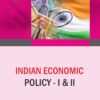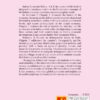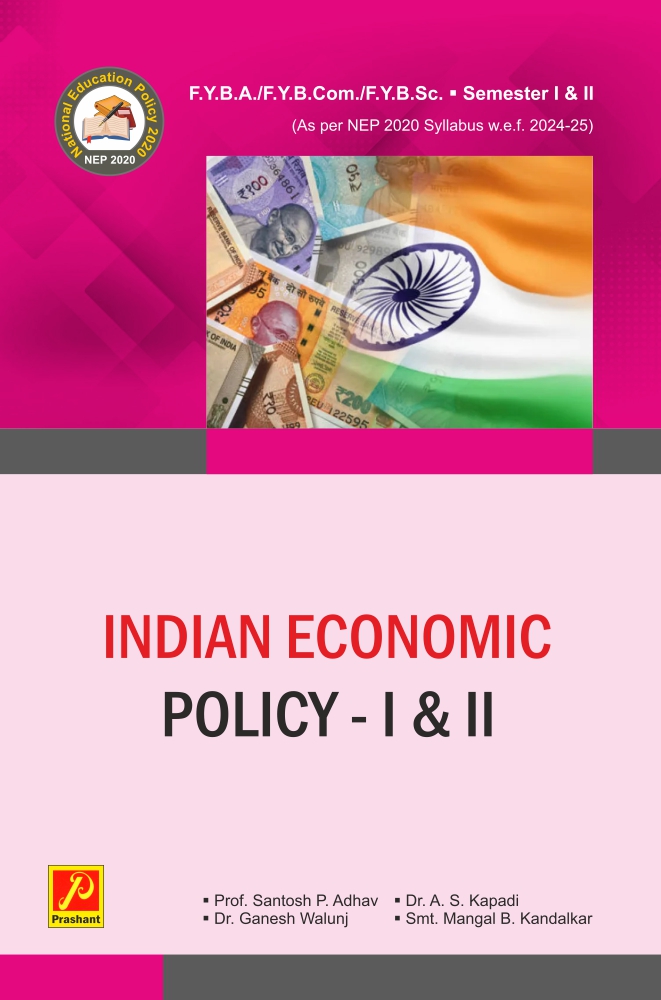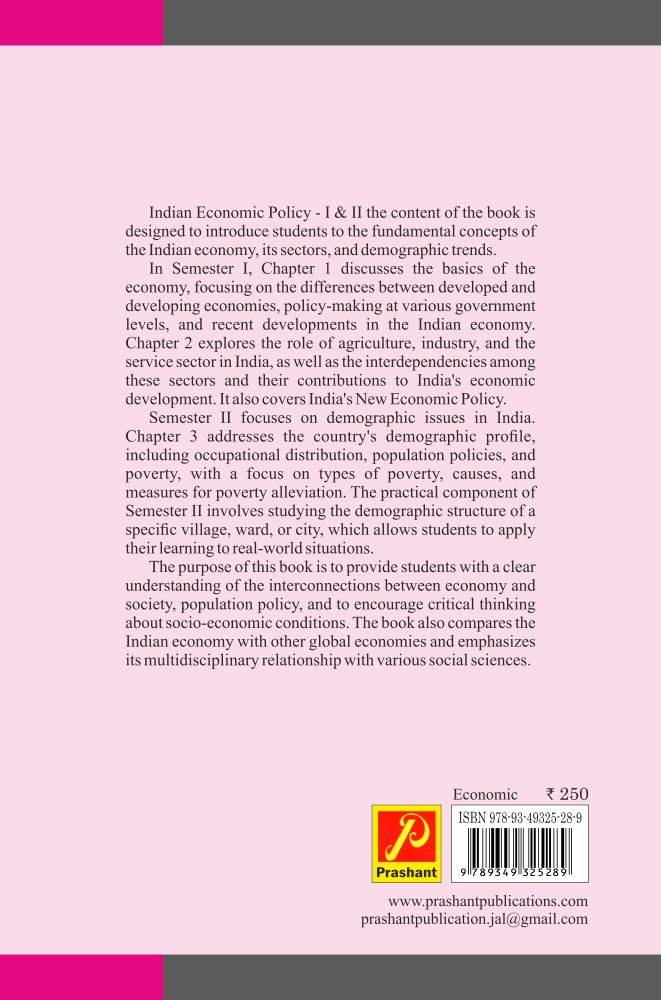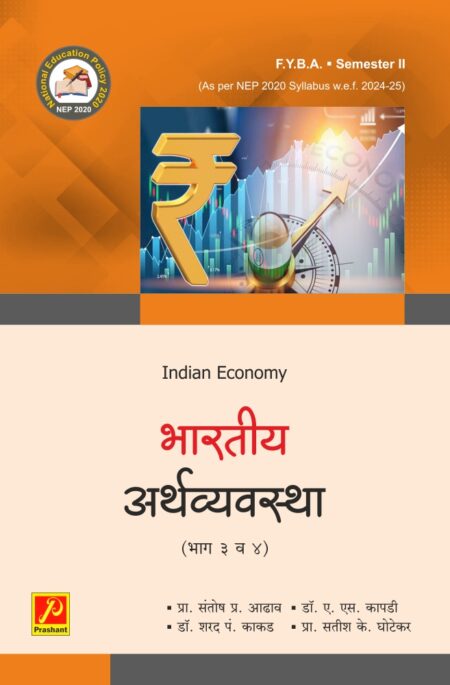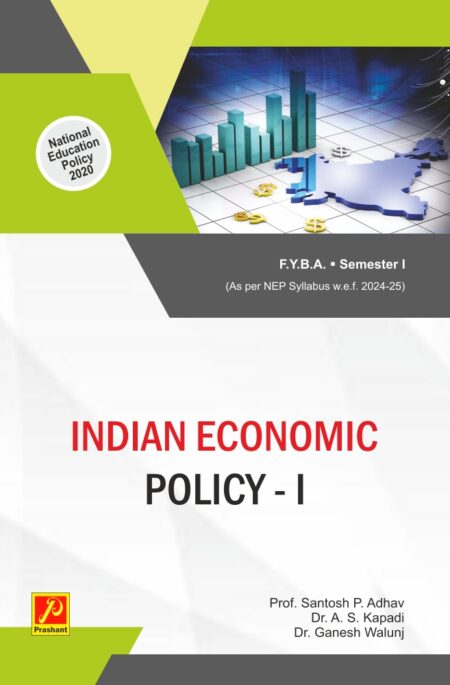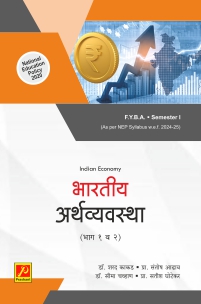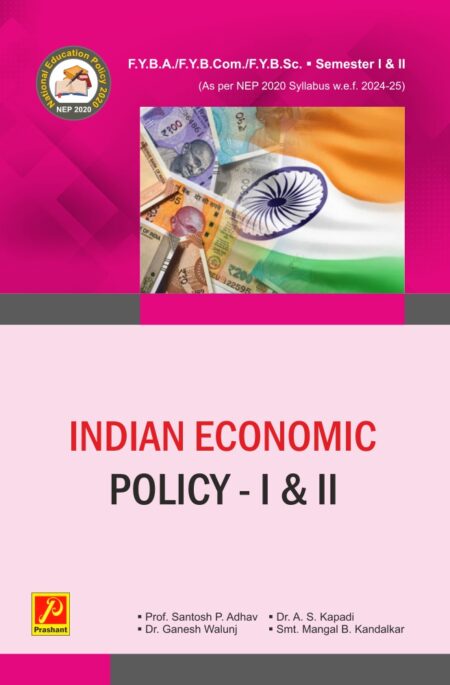Indian Economic Policy - I & II
F.Y.B.A./F.Y.B.Com./F.Y.B.Sc. | Semester I & II
Authors:
ISBN:
₹250.00
- DESCRIPTION
- INDEX
Indian Economic Policy – I & II the content of the book is designed to introduce students to the fundamental concepts of the Indian economy, its sectors, and demographic trends.
In Semester I, Chapter 1 discusses the basics of the economy, focusing on the differences between developed and developing economies, policy-making at various government levels, and recent developments in the Indian economy. Chapter 2 explores the role of agriculture, industry, and the service sector in India, as well as the interdependencies among these sectors and their contributions to India’s economic development. It also covers India’s New Economic Policy.
Semester II focuses on demographic issues in India. Chapter 3 addresses the country’s demographic profile, including occupational distribution, population policies, and poverty, with a focus on types of poverty, causes, and measures for poverty alleviation. The practical component of Semester II involves studying the demographic structure of a specific village, ward, or city, which allows students to apply their learning to real-world situations.
The purpose of this book is to provide students with a clear understanding of the interconnections between economy and society, population policy, and to encourage critical thinking about socio-economic conditions. The book also compares the Indian economy with other global economies and emphasizes its multidisciplinary relationship with various social sciences.
1. Introduction to Indian Economy
1.1 Economy: Meaning and Classification
1.2 Developed and Developing Economies
1.3 Indicators of Developed Economy
1.4 Characteristics of Indian Economy as Developing Economy
1.5 Major issues of Economic Development in India
1.6 Monetary and Fiscal Policy in India
2. Agriculture, Industry and Service Sector In India
2.1 Sectoral Structure of an Economy
2.2 Contribution in Economic Development of India: Agriculture, Industry and Service Sector
2.3 Sectoral Distribution of Gross Domestic Product (GDP) and Employment in India
2.4 Interdependence between Agriculture, Industry and Service Sectors
2.5 New Economic Policy
3. Population in India
3.1 Demographic Profile of India
3.1.1 Size and Growth
3.1.2 Sex Composition
3.1.3 Age Composition
3.1.4 Density of Population
3.1.5 Rural-Urban Distribution
3.2 Occupational Distribution of Indian Population
3.3 Population as a Human Capital for Economic Development
3.4 Population Control Policy in India
3.5 Poverty
3.5.1 Meaning and Types of Poverty
3.5.2 Poverty line : Need of Redefining
3.5.3 Causes of Poverty in India
3.5.4 Measures to Eradicate Poverty in India
Practical
1. Study of Demographic Structure of a Village/Ward 168
in respect of
1.1 Sex Composition
1.2 Age Composition
1.3 Density
1.4 Literacy Rate
1.5 Birth and Death Rate
1.6 Infant Mortality Rate
1.7 Life Expectancy
1.8 Per-Capita Income
1.9 Status of Poverty
1.10 Status of Poverty line
Related products
-
भारतीय अर्थव्यवस्था
₹225.00

